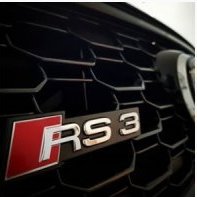[Closed] Borg Warner Efr Series Turbos
Announcements
-
Similar Content
-
Latest Posts
-
My thing I'd be doing, is pulling it out, and just getting the tune cleaned up for now. Before that even happens, checking over everything, like vac hoses, fuel hoses, etc. No point dropping thousands on sensors if the moment you start it back up all the oil leaks out, or it has massive vacuum leaks etc. But really, to know what to do, depends on what your use case is. Hard core track car? Throw most sensors available at it. Street car, I'd probably just run oil pressure, oil temps, water pressure, water temp, probably fuel pressure too. I don't know exactly what the Link can handle and do with those though. And if it's mainly just to cruise the streets, rather than mountain runs, you can probably skip most of the above if you've already got them in as gauges and warning lights. PS, inb4 "sell it and buy a modern sportscar"
-
Keen to see the turbosmart data, to date I've only seen negative things in terms of response for them. Very small sample size though. Hawkins is a big advocate in his videos of the larger rear housings. I managed to make similar power with a lower spec motor on the smaller .8 rear, keeping decentish spool. The people he works with now are big power cars compared to mine though, mine really is setup to drive around and enjoy. I don't have any back pressure monitoring though, so couldn't say if its good or bad on my car, just that it does what I want it to do. Future I want a higher compression more cubes motor to give a bit more bottom end and hopefully the new g35-1150 gets me to the 850 rear comfortably. But maybe I won't due to exhaust back pressure.
-
No, I refuse to buy their cheap ass crap! I do need to order a bunch of different nuts/bolts to refill my nut/bolt wall though. Maybe you could go for a walk through Bunnings for me? (Or send me some stuff from your work? ) I really struggle to work out how the US standardised to Metric in what the 70s or 80s, and yet, half a century later, there's been little done to actually bring it into fruition. It truly baffles me On the whole Fastenal thing, I went reading their site (My god they sell a lot of varied stuff!), and it seems like it really depends what store you're near if you can walk in and just grab a few small things, or if that branch is primarily distribution with only a small window of "counter time" available (if at all). That definitely makes it harder, as move locations and it drastically changes your ability for success For things like your M6x1.0, if you want to work on your own Skyline, and you also have a "home workshop" I'd recommend setting yourself up a small Nut/Bolt wall/section. It doesn't even need to be big at all. Most things depending on the diameter, will be a specific pitch, like the M6x1, M5x0.7 etc. Bigger bolts is mostly 1.5, except for a small number of things and that will come down to torque. From memory bolts for the brake calipers (and other things that need a lot of torque) will end up being a 1.25mm pitch. Save up a few dollars, and order a range of nuts/bolts. If you want to minimise cost a little, buy something like M6 x 40, and M6x70mm (1mm pitch) in both. In addition, buy yourself an M6x1mm thread chaser. That way you have long bolts that you can cut down to size, and then chase the threads out. Funnily enough, I find what I'd pay here for ordering 5 bolts, I can pay about 50% more and you'll get 100 of them. If that doesn't quite work out due to space / ability to buy plenty up front, then each time you need some bolts, order 100 of what ever you're getting. Put them in clearly marked containers. Over a few years, you'll acquire plenty of different sizes, and will end up ordering less and less. And the cost for 100 bolts won't be much more than you paid for your 5 you needed to order anyway Just takes a little planning ahead, by investigating what nuts/bolts you'll need, and ordering them before doing the job. Edit: If it's also primarily for working on just the Skyline, for some reason my brain is screaming that at some point, either Nissan, Nismo, (Or possibly a third party) was selling a "kit" of every nut and bolt in a Skyline, purely for people restoring/rebuilding. It'd likely be quite expensive, but would give you every/any nut/bolt you need for stock/factory things. I'm not sure if it's still available, or even if it actually fully came to market, it's just something niggling in the back of my brain that you could look into further if that sort of thing interested you? (It might have been for the R32 GTR or something specifically too, and not just any Skyline)
-
90lb/min @ 20psi is wonderful, not so much of a problem with the G35-1050's compressor efficiency (aside from how bad they roll back at higher pressure ratios). The issue is more to do with the turbine's flow, which is why I'm not sold on going an even higher flowing compressor with the same turbine. I'd say go back over Motive DVD's testing of the G35 1050 and Hawkins's comments regarding exhaust back pressure issues with it, I'd need to go back but I have in my head he went to the biggest hotside and ended up sacrificing a lot of spool (so it ended up behaving like a bigger turbo) and still had EMAP issues. I've heard various other experiences along the lines of that. At this stage at least I rate all I've seen about Xonas (for transparency I've not used one directly, but I have spoke plenty with people who have) to have low exhaust restriction for the response they offer for any given setup - basically they allow the engine to breathe, which is good for the engine and makes making power a lot easier. You arguably don't have to even push quite the same amount of airflow through an engine to make the same power if you don't have the bum plugged up with exhaust gas struggling to escape the engine due to an underflowing turbine. In terms of reliability, to be fair I've had great luck with Garrett turbos as well - my GT3076R lasted forever, then I sold it and the next owner had no issues, then that car got sold and it was still going strong last I ever heard about it. The trick is with the old GT-series turbos the compressors etc were no way near as efficient as what we have these days, it was almost hard to push them into severe overspeed situations without having a boost leak or something - and that is what often starts the failure situation. In terms of your G35 I'm pretty sure you're running yours within sensible limits, something people with Xonas and Precision turbos aren't often so inclined to do. The "compressor maps" are "Joe blogs ran 45psi through his 6466 so I can do the same" and built their setup to send it to the moon. I've seen EMAP and compressor speed data where people have actually set that stuff up on Precisions and Xonas which have been run hard and the comp speed numbers are very very exciting at times - like I've seen 76mm Precisions run at rpm that you ideally shouldn't run a G35 1050 lol. I know people who have run G-series Garretts hard and hard a failure, then replaced them with Pulsar turbos as a cheap "get it going" stop gap with the intent of doing a proper upgrade when THAT fails... and are still running the same thing. Like anything, ymmv and it's not always to do with the quality or trustworthiness of said product. I've been provided with a bunch of compressor maps for Turbosmart turbos and will update my list based off that, they could prove to interesting reading and an interesting alternative as well.
-
Just cage it, call it a race car, and then fall in love with the chirp chirps through pit area! Also, this is coming from someone with a completely locked diff...
-







Recommended Posts